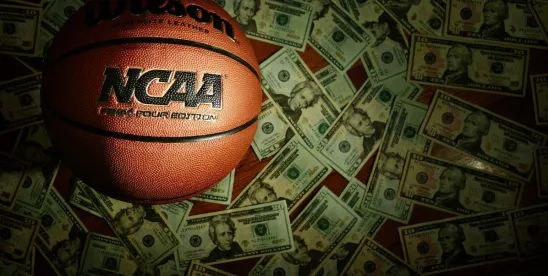In 2021, the NCAA upended its decades-long prohibition on student athletes’ ability to profit from their name, image and likeness (NIL). This means that student athletes now have, and will continue to market themselves as, a “brand,” i.e., an identity or personality that has intrinsic value, in part due to their association with school athletics. The landmark $2.8 billion proposed settlement in House vs. NCAA, currently pending approval in the US District Court for the Northern District of California, will establish guidelines for this revenue-sharing, including for NIL revenues, among schools and student athletes, further allowing students to profit off of their individual contributions to their team.
While many colleges and universities whose student athletes were marketing their NIL prior to the House settlement chose not to involve themselves in those arrangements, some institutions are now taking a second look. Because schools who choose to pay their student athletes will necessarily be involved in the monetization of an athlete’s NIL, it is increasingly important for them to understand the mechanics of NIL agreements and concerns that might arise as a result of a student athlete actively marketing themselves and partnering with commercial entities. Schools can then decide whether and how they will support student athletes in their relationships with outside entities participating in the athlete’s promotion of their “brand”—which in most cases necessarily involves their status as a member of a college team.
For example, colleges and universities might consider imposing restrictions on the types of products an athlete should promote and guidance (or advice) related to contract terms. Schools have an interest in restricting their student athletes from promoting products that may be harmful to their student body, such as alcohol, tobacco or gambling platforms. Schools might also encourage student athletes to bargain for autonomy that would allow them to reduce involvement or cancel partnerships, to protect both the student’s brand and the student’s academic and athletic priorities. Direct guidance on contract formation, or referrals to outside advisors, are two avenues by which schools can assist student athletes, and schools should weigh the costs and benefits of each approach.
Schools should also consider whether they want to restrict the use of their own branding in the athlete’s promotional endeavors media. Developing formal guidelines or approval processes that must be followed before a student athlete can create paid content in official school uniforms or using school logos is an approach that can help the schools create distance from undesirable third parties, avoid claims of discrimination or favoritism among student athletes and protect their own image and intellectual property.
Finally, student athletes are rapidly gaining popularity as social media influencers, and schools can provide support and guidance specific to this arena. A recent article from the New York Times illustrates this approach, highlighting the University of North Carolina’s partnership with social media management firm Article 41, which works to partner students with brands like Athleta and Uber for paid advertising opportunities. The article cites to a 2023 survey from the Keller Advisory Group, finding that there are 27 million paid social media influencers in the United States, with 44 percent of them doing it full time. With student athletes becoming entrenched in the world of paid content creation, adding to their already full plates of sports competition and schoolwork, colleges may be able to head off issues and encourage brand relationships that are holistically more beneficial to student athletes by providing support and guidance informing athlete-brand relationships.
More broadly, athletes and their schools alike would benefit from having a system in place to address social media blowback. Many student athletes are still teenagers, making them especially susceptible to harsh online criticism that is inevitable in the digital age. Having the tools to support student athletes manage such criticism would benefit universities and students alike by providing athletes with mental health resources and protecting the reputations of all involved.
Another consideration is whether colleges and universities should provide course credit to student athletes for their time developing and marketing their “brands.” Per the New York Times article, some athletes view their experience building a social media following as “akin to an internship.” With all the time student athletes already dedicate to sports and schoolwork, they may benefit from receiving some form of elective course credit for their time spent developing their personal “brands.” Structuring personal marketing as an educational experience has the added benefit of giving the school more influence as to how athletes approach and consider monetizing their NIL. Alternatively, schools could consider whether they should limit their athletes’ involvement in paid content creation to ensure they can continue to thrive in their sport and their studies.
As the landscape of NIL continues to evolve, colleges and universities—especially those who opt in to athlete compensation—should continue to strategize how to best support their students and comply with all applicable laws and regulations.






 />i
/>i

